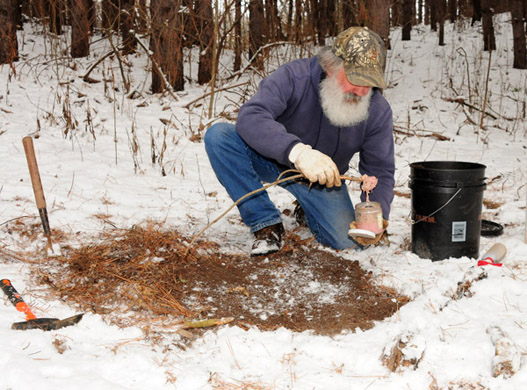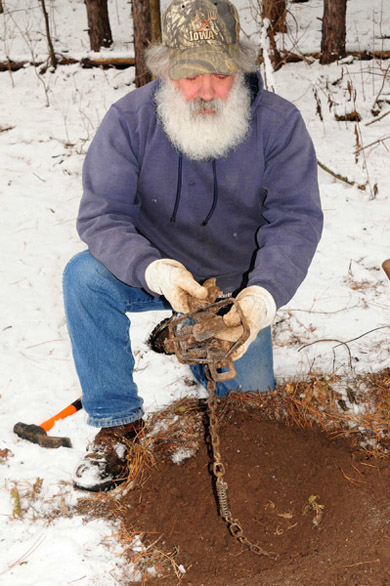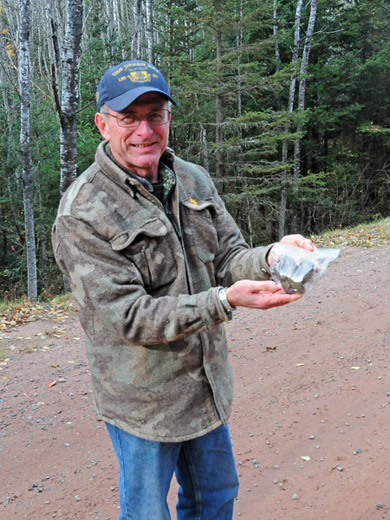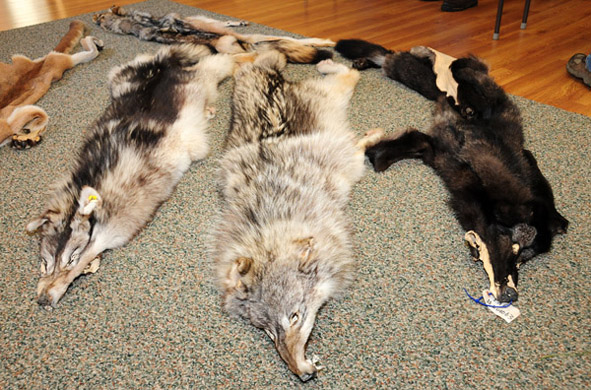LAST UPDATED: May 1st, 2015
Our understanding of gray wolves advanced far more from Wisconsin’s recent wolf-hunting season than from the 117 candles animal-rights activists lighted in mid-January to honor wolves killed during the hunt. Granted, activists had every right to ring bells and burn candles outside the Wisconsin Department of Natural Resources offices in Madison that day. They can also believe wolves exist on a higher spiritual plane than other Wisconsin wildlife. Maybe they even stand superior to humans in some folks’ eyes. But wolves don’t benefit from such pubic displays of pretension.
In contrast, biologists, researchers and volunteers conduct the real work of wolf management in near anonymity from university campuses and DNR offices around Wisconsin, as well as in Michigan, Minnesota and a handful of Western states now home to wolves. For Wisconsin, this work includes not only tracking surveys to assess wolf numbers, but compiling and analyzing data from the 2012 wolf hunt. These studies are supported in part by the $294,320 generated through applications and license sales from the state’s first wolf season.
Trappers took 62 (53 percent) of the 117 gray wolves killed during Wisconsin’s inaugural wolf hunting/trapping season in 2012.
I realize most of that money will compensate people for pets and livestock killed by wolves, but at least the state is no longer grifting money from the DNR’s endangered resources program for those abatements. No matter what anyone thought of Wisconsin’s inaugural wolf hunt – which opened Oct. 15, 2012, and closed nearly 10 weeks later on Dec. 23 – we’re just starting to reap its educational bounty. For instance, most hunters and trappers pursued wolves with the same respect shown other game animals. Adrian Wydeven, the DNR’s wolf ecologist, said only two wolves were confiscated when investigators determined the licensees misled DNR wardens where they killed the wolf, hoping to dodge season closures in their areas.
Of the 78 wolves killed before Wisconsin’s gun deer season opened Nov. 17, 2012, 54 (78 percent) were taken by trappers. After the gun deer season opened, the bulk of the remaining wolf kill (39) was taken by rifle hunters.
For its part, the DNR proved it could monitor the season closely and close it quickly. Hunters and trappers exceeded the state’s 116-wolf goal by one animal statewide. The DNR matched the quota to the wolf in three of the six zones, going 32 for 32 in Zone 1, five for five in Zone 4, and 23 for 23 in Zone 5. It fell one short of the 20-wolf quota in Zone 2, and exceeded by one the 18-wolf goals in zone 3 and 6. That performance stood in contrast to grim – if not apocalyptic – predictions from critics last year who claimed the agency couldn’t cap the kill effectively. With help from TV, radio, emails, news releases, Internet alerts, and old-fashioned word-of-mouth, the DNR closed the season compartment by compartment like seasoned sailors securing a ship for heavy seas.
Therefore, researchers earned the luxury of studying harvest data in relative quiet. The work is now underway as they catalog DNA from each wolf to build Wisconsin’s genetic library on canis lupus. They’ll also record the sex and age of each wolf, and the reproductive status of each female. Wolf ages will be precisely determined by a Montana laboratory, which is analyzing a tooth from each wolf for its exact age. With these baseline data compiled, we’ll learn how much the sex ratios of wolves killed in future seasons changes. Of the 117 killed in 2012, 69 (59 percent) were males and 48 were females. Also, 62 (53 percent) were taken with foothold traps. We’ll also learn whether the wolf’s pregnancy rates change over time, and how they vary by age and physical condition. We might also learn if it’s a fluke no wolf was killed in Ashland County in northwestern Wisconsin, even though it holds several packs.
If you come across wolf scat before the season opens, collect it in a Ziploc bag and freeze it for later use when setting foothold traps.
Wydeven noted other results, including:
— Seventy-eight (66.7 percent) of the wolf kill occurred before the gun deer season opened Nov. 17, of which 54 (78 percent) were taken by trappers. Of those, 44 (56 percent) were males.
— Twenty wolves (17.1 percent) were killed during deer season, of which 18 (90 percent) were shot by hunters. Of that kill, 15 (75 percent) were males.
— Nineteen wolves (16.2 percent) were killed after deer season, of which 13 (68 percent) were shot by hunters. Of that kill, 10 (53 percent) were males.
Gray wolves are seldom simply gray. A few grow black pelts, but most are various combinations grays, blacks and browns.
Wydeven said the male-female ratio of wolves caught by trappers was nearly 50-50, but well over half of wolves shot by hunters were males. “We don’t know if that says something about behavioral differences between male and female wolves, or if it’s more a function of hunter selection,” he said. “It’s likely that when hunters call in two or more wolves, they’ll shoot the largest one, which tends to be a male.” Granted, some folks might hate that wolves die to advance science, but the alternative is remaining captive to wild assumption and prophesy.

 By
By 







